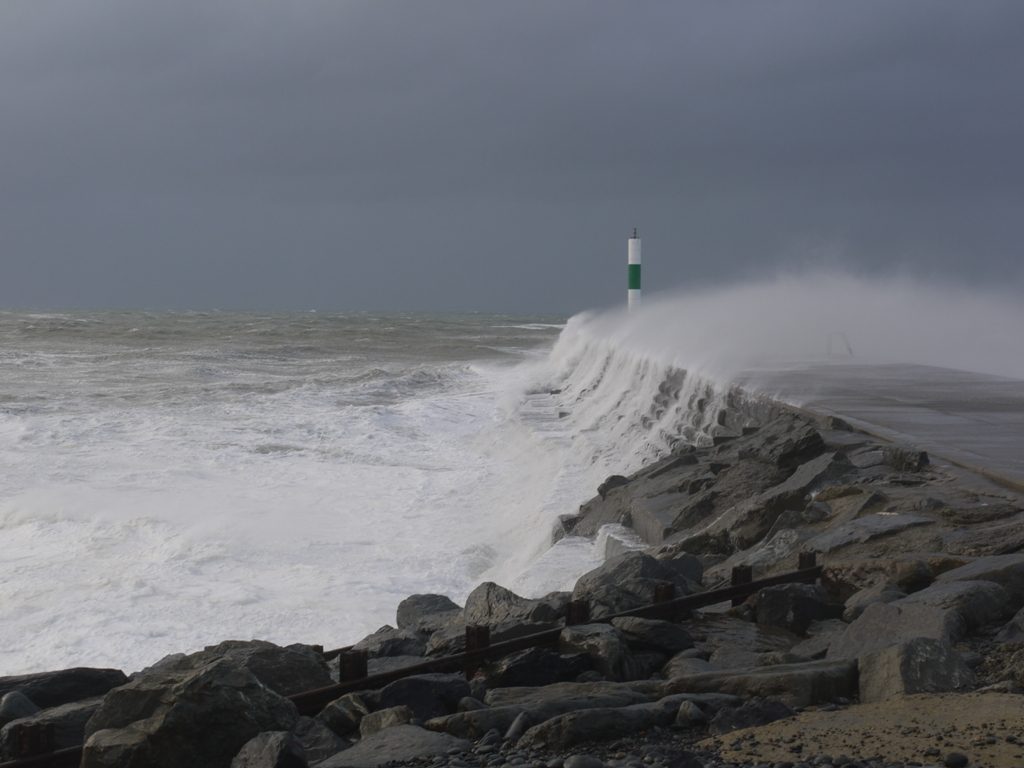
Storm Ophelia Aberystwyth. The stone jetty north of Tanybwlch beach
by The Curious Scribbler
There are few more invigorating spots than Tanybwlch beach during a powerful storm. There is the rattling cascade of huge pebbles sucked back and hurled again against the shore, the huge grey brown rollers trailing spume, and the explosive crash of the waves against the concrete jetty which protects the harbour from the south.
At high tide yesterday, at 5.30pm Ophelia was at its height, and the huge waves broke relentlessly along its length, an unbroken sheet of foamy water flowing across the jetty and cascading into relative calm on the other side. Even more spectacular was the backwash where a huge wave rebounding from the jetty side would travel southward until it collided with the next huge roller coming in. Then an explosion of disordered water flies high into the grey sky.
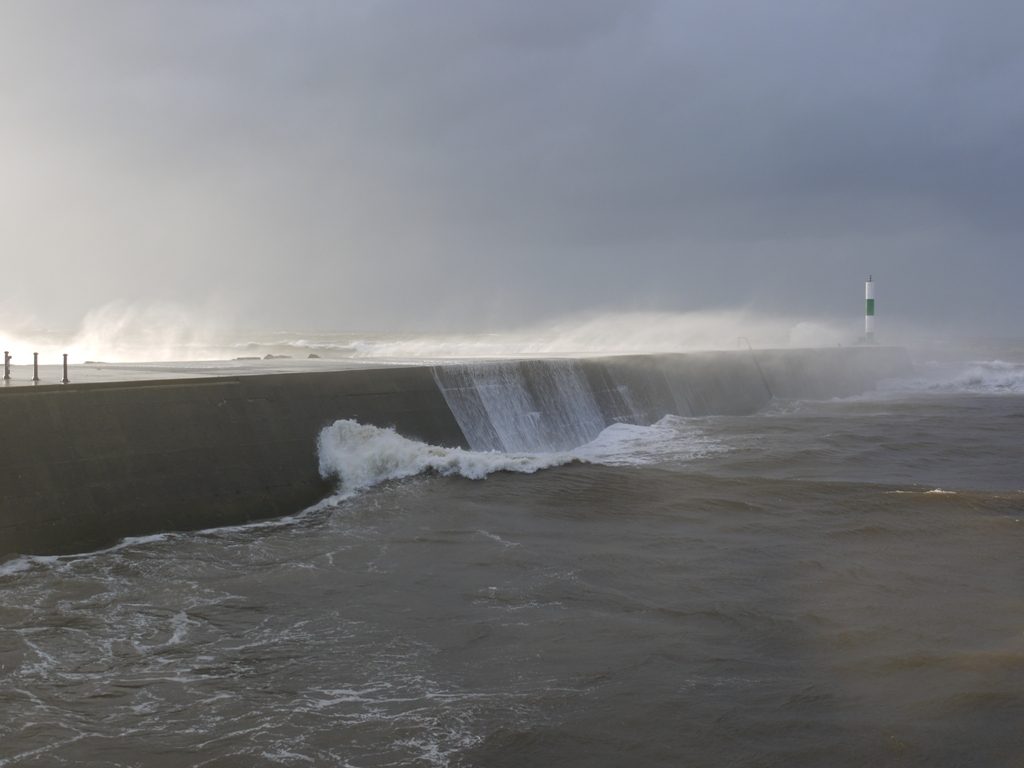
Storm Ophelia Aberystwyth. Water streams over the stone jetty
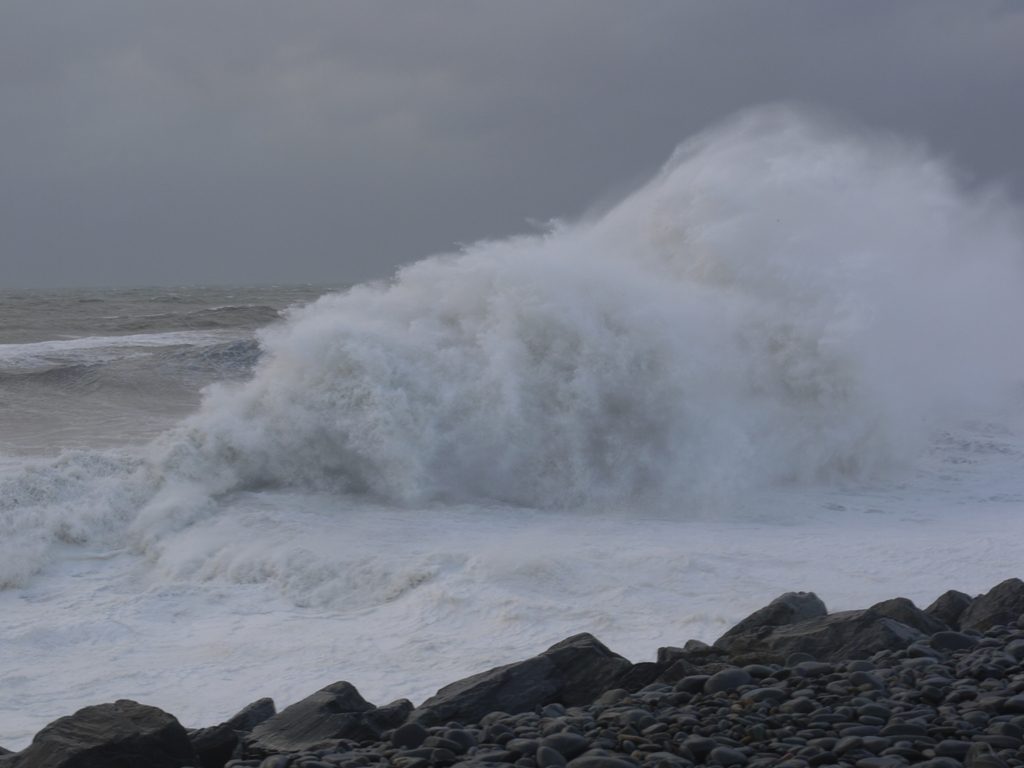
Storm Ophelia Aberystwyth. Waves collide as they rebound from the stone jetty
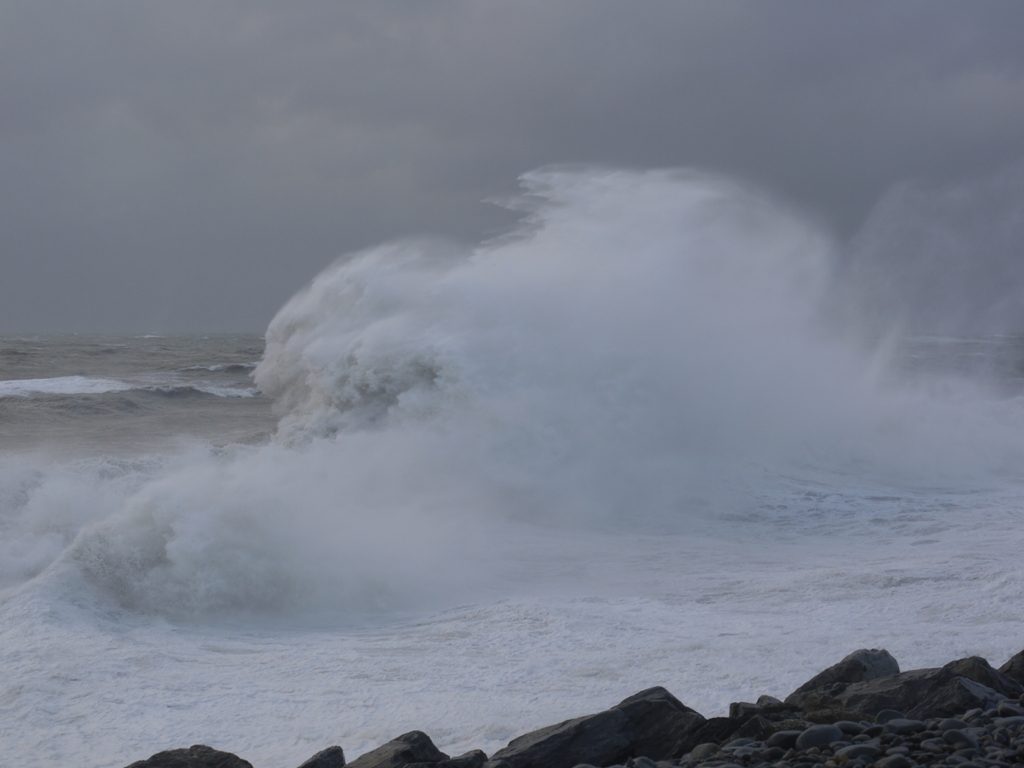
Storm Ophelia Aberystwyth. Another wave rebounds against a new one
Meanwhile high tide held back the outflow of the Ystwyth, ( which is tidal until the corner where Nanny Goats Walk sets off inland) and the water backed up to flood the grass and lower path along the riverside. Standing on the Pen-yr-anchor bridge the gale hit one with ferocious force, coming directly along the overflowing river, rippled to wavelets by the wind.
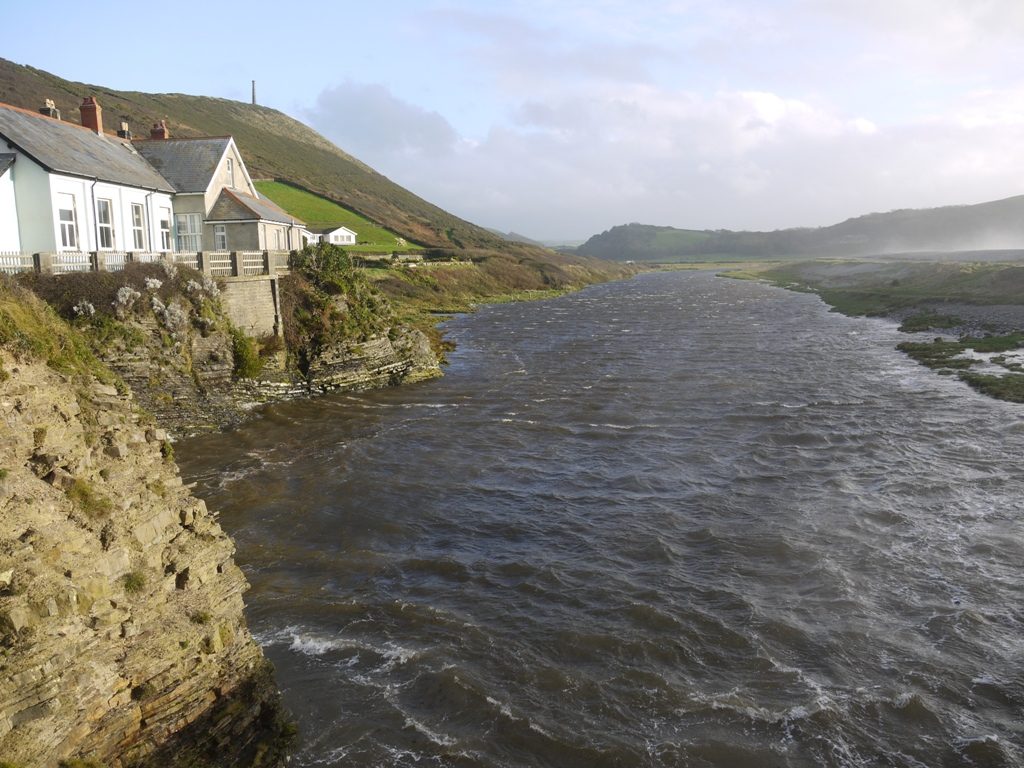
Storm Ophelia. The Ystwyth river backs up at high tide
Further south along the curving storm beach the waves rush up, loaded with sand and pebbles, and pour over into the Ystwyth river behind it. Little wonder that the Tanybwlch flats have not been earmarked for further sea defences by the Environment Agency (now NRW). At the foot of Alltwen the pasture is returning, not for the first time, to salt marsh and standing water.
There were a dozen or more of us, and several dogs on the top of the strand, teetering in the gusts and watching, filming or photographing the scene. The green and white pillar on the end regularly disappeared from view. Incautious cars could be seen driving out onto the wooden jetty on the far side of the harbour, spray suddenly engulfing them, and a small blue and white motor boat, tethered to the jetty listed and slowly sank under the onslaught.
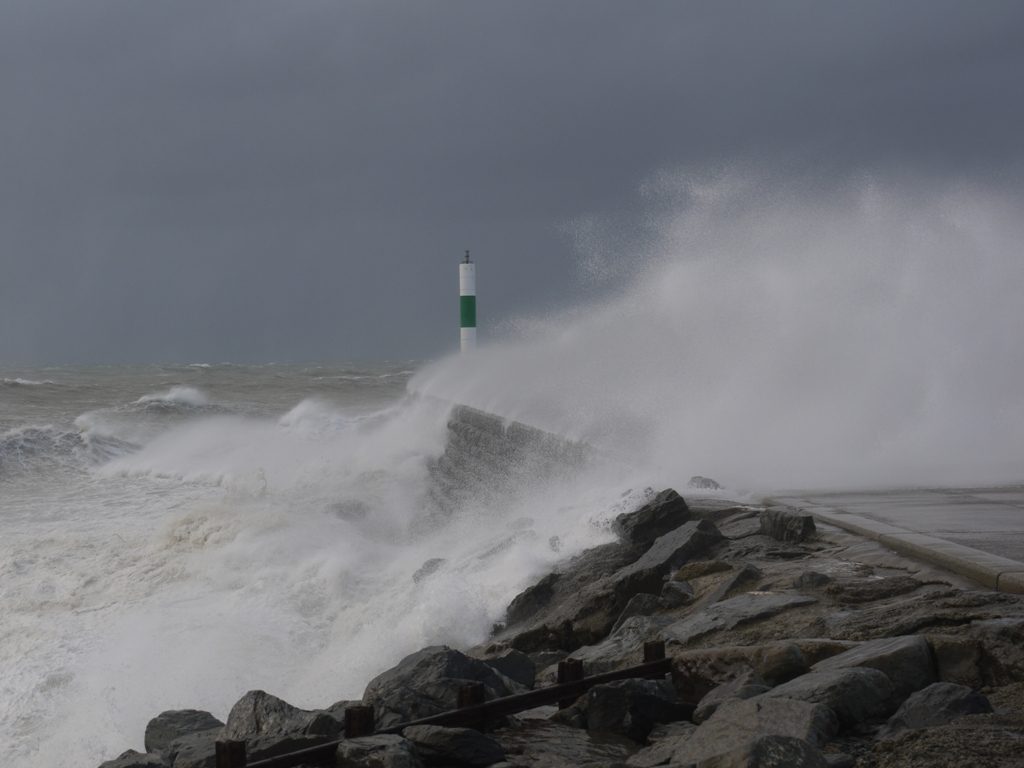
Storm Ophelia Aberystwyth. Waves break over the stone jetty
I then went to the main Aberystwyth promenade, where the full force of the south wind was less, but the waves crashed satisfyingly on the sea wall, sending a sheet of sand and water over the prom. Spectacular explosions of spray engulfed the public shelter on Bath rocks, which was only recently restored after an even more severe pummeling by Storm Frank in 2014.
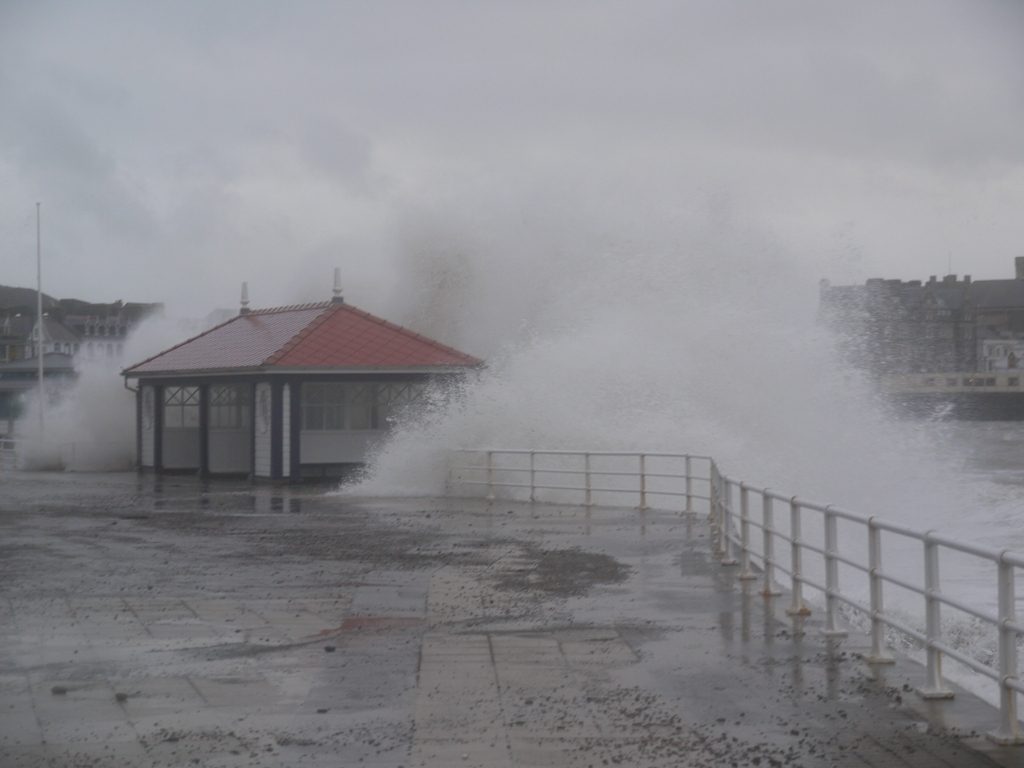
Storm Ophelia Aberystwyth. Spray engulfs the Victorian Shelter
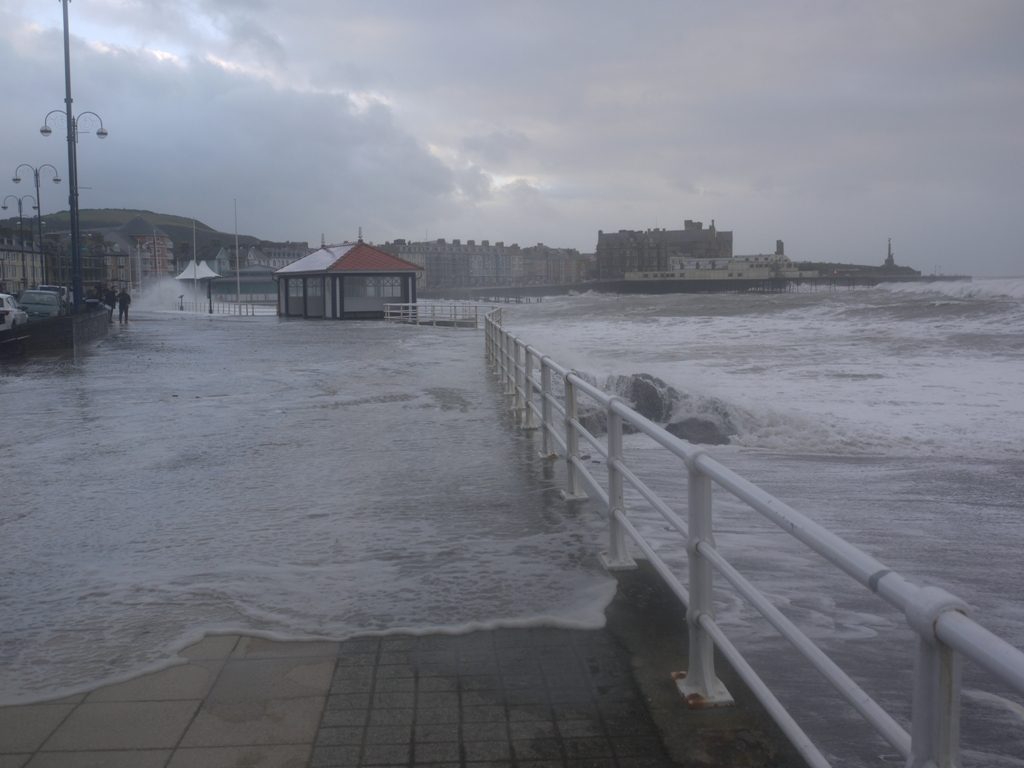
Storm Ophelia Aberystwyth, water streams over the prom
Further north the waves shot directly skyward in front of Alexandra Hall. I have seen them burst higher in other storms, but there is a little buttress on the promenade near there which always attracts the dare devils waiting to run back from a soaking from the even more exceptional wave.
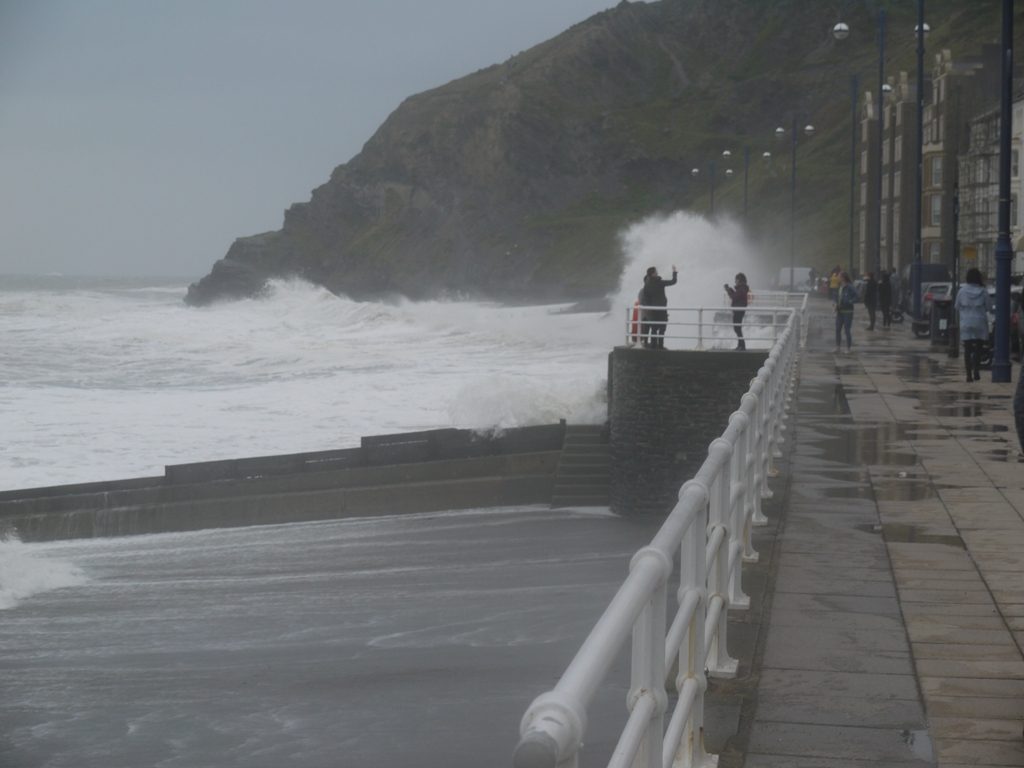
Storm Ophelia Aberystwyth. Taking selfies in the storm
It was a bit of a party atmosphere all along the prom, as people walked, dodged the overflowing waves and took photos on their phones. A person in a motility scooter bowled gaily along the prom with a following wind behind it. I would have been a bit fearful in so light a vehicle with the wind resistance of its hood. These are the circumstances when buggies and prams readily escape their owners.
If there is one species entirely unimpressed by the 70mph gusts it is the starling. Autumn is setting in and the big traditional roost is filling up under the Pier. Without any apparent difficulty the flocks cruised in at dusk, jinking in perfect synchrony to form strands and ovoids in the sky before diving down to roost on the ironwork under the deck. They came in smaller groups of one to two hundred birds, and perhaps dived to safety sooner than on a calm evening. But while few gulls flew in the wild winds, these little birds carried on as if the evening was entirely unremarkable.
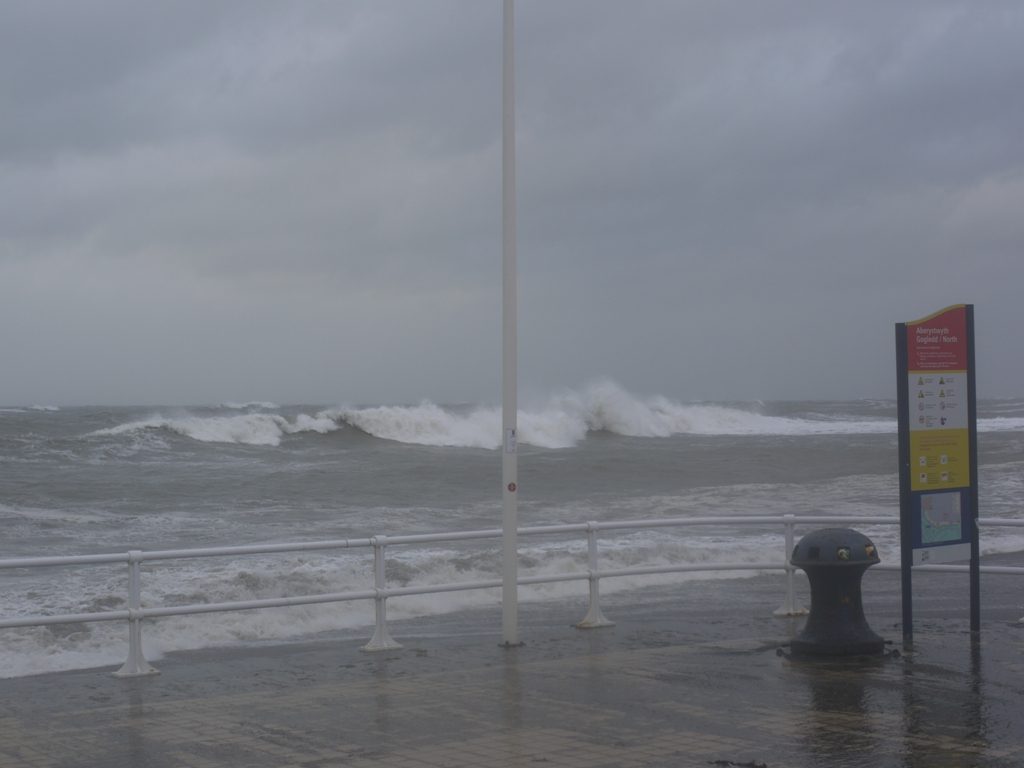
Storm Ophelia Aberystwyth. Huge waves approach north beach

Your descriptions are wonderful and read like poetry! Here in East Anglia all we had was the strange orange sky for an hour or so; it was hard to imagine what was happening so far west of us, but reading this makes me realise we missed something exhilarating (though undoubtedly dangerous!).
Thanks for your kind comment, it’s really gratifying that you enjoy my writing!